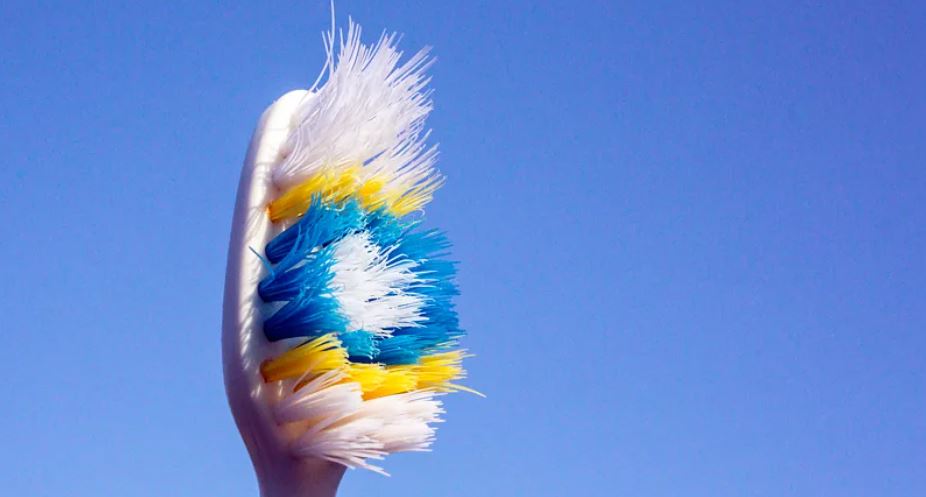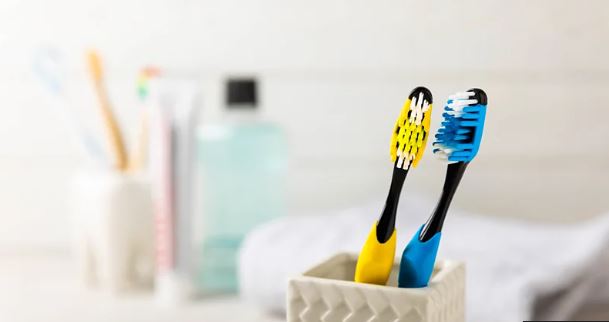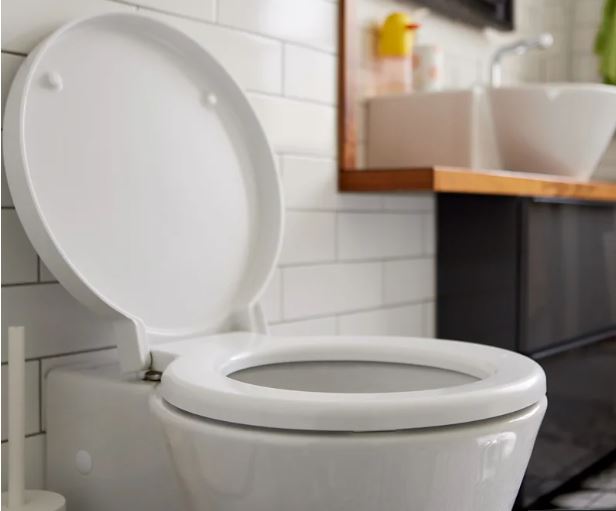

Bacteria from our toilets, the cold sore virus and thrush-causing yeast can thrive on our toothbrushes. But there are ways to keep your toothbrush a little cleaner.
Your toothbrush is a disgusting miniature ecosystem. Its fraying bristles form an arid scrubland that each day is temporarily flooded, transforming it into a wetland awash with nutrients. Thriving among the thickets of towering plastic stalks are millions of organisms.
Right now your toothbrush is home to something like 1-12 million bacteria and fungi belonging to hundreds of different species, alongside countless viruses.
They form biological films on the exposed surfaces of your brush, or worm their way into the fractured stalks of ageing bristles.
A daily influx of water, saliva, skin cells and traces of food from our mouths give these microbes all they need to thrive. Every so often, they are joined by a shower of other microorganisms that arrive with the flush of a nearby toilet or opening of a window.
And twice a day you put this delightful cocktail into your mouth to give it a good stir around.
So, should you be more concerned about how clean your toothbrush is?
It's a question that has been troubling dentists and doctors for years, prompting them to examine just what is living on our toothbrushes, what risks those microbes pose and how we should be cleaning our tooth-scrubbing implements.
Where the microbes come from
"The microbes on toothbrushes primarily originate from three sources," says Marc-Kevin Zinn, a microbiologist at Rhine-Waal University of Applied Sciences in Germany, who has studied the microbial contamination of toothbrushes. These are the user's mouth, their skin and the environment where the toothbrush is kept.
But before we even use a toothbrush for the first time it can carry its own community of microbes. A study of 40 new toothbrushes from different manufacturers bought from stores in Brazil, for example, found half were already contaminated with a variety of bacteria.
Fortunately, most of the microbes found on our used toothbrushes are fairly harmless. The majority come, perhaps unsurprisingly, from our own mouths. Each time we pop the brush into our oral cavity, the bristles sweep up microbes such as Rothia denocariosa, Streptococcaceae mitis and members of the Actinomyces bacteria – all normally benign residents of our mouths. Some of those clinging to the bristles and toothbrush head can even be beneficial for our health, helping to protect us against other microbes that cause tooth decay.
But lurking amongst them are hitchhikers that do mean us harm.
Harmful bacteria
"The most important are Streptococci and Staphylococci, which cause tooth decay," says Vinicius Pedrazzi, a professor of dentistry at the University of São Paulo in Brazil. Others can cause inflammation in our gums, known as periodontal disease.
Researchers have also found bacteria and fungi living on used toothbrushes that have no right to be there – organisms more commonly associated with stomach infections and food poisoning such as Escherichia coli, Pseudomonas aeruginosa, and Enterobacteria. Studies have also identified pathogens like Klebsiella pneumoniae – a common cause of hospital-acquired infections – and Candida yeasts, which can cause thrush, on toothbrushes.
These microbes come from the water we rinse our brushes with, our hands and other parts of the "environment". But consider this – that environment is likely to be your bathroom.

Bathrooms are warm, humid places that tend to fill regularly with aerosols, fine droplets of water that can carry bacteria and viruses through the air. This makes toothbrushes kept in bathrooms especially prone to contamination, says Zinn.
Most of us also tend to have toilets in our bathrooms where our toothbrushes are. And, fair warning, this is where it gets pretty disgusting.
The toilet plume
Each time you flush the toilet, a plume of tiny droplets of water and faeces are thrown up to 1.5m (5ft) into the air around it. Carried with this aerosol-like spray can be bacteria and infectious viruses such as those that cause flu, Covid-19 and the winter vomiting bug norovirus.
If you happen to keep your toothbrush close by, then the contents of your toilet bowl could well end up settling on to the bristles you later put into your mouth. There is more risk of directly inhaling infectious microorganisms at the time of flushing, but you might want to think twice about leaving the toilet seat up before you flush in future.
In shared bathrooms, there is perhaps more of a problem – research at one university found that 60% of student toothbrushes in communal bathrooms were contaminated with bacteria found in faeces, and there was a good chance microbes on one person's brush came from someone else.
But Erica Hartmann, an associate professor of engineering at Northwestern University in Illinois, US, who studies how microbes survive in real-world environments, isn't convinced the toilet plume is as much of a concern as some fear. Her own team's work didn't find as many faecal-related bacteria as might be expected on 34 toothbrushes sent in by members of the public in Illinois. She points to research that suggests many of these gut-associated microbes don't survive long when exposed to the air.
"I don't think most people are getting sick from their toothbrush," she says.
However, some research shows that viruses such as influenza and coronaviruses can survive on toothbrushes for several hours and even up to 48 hours in the case of herpes simplex virus-1, the virus that causes cold sores.
This could provide a potential way for diseases to spread – and public health advice is not to share toothbrushes for this reason.
Public health bodies also warn against letting toothbrushes touch each other if more than one is stored together, particularly with those belonging to people you do not live with.
But Hartmann sees this as less of a concern for people who do live together. "People who live together share a higher proportion of the microbes in their mouth than people who don't," she says. "I doubt this is driven by such an indirect route as storing toothbrushes close by, as opposed to the more direct route of kissing or less indirect route of sharing." (It's worth noting that dog owners will often share many of the same microbes as their pets).
Indeed, some of the viruses found on toothbrushes could in fact be working in our favour – Hartmann and her team found that toothbrushes host thriving communities of viruses known as bacteriophages, which infect bacteria rather than humans and can help to control their numbers.
What's the risk?
In most cases the risk from pathogens is small, agrees Zinn, but it could be more of a concern for those whose immune systems are compromised, meaning they are more prone to infections. Zinn's research, along with other similar studies that have sequenced bacterial DNA from toothbrushes, have found that at least some of these bacteria carry genes that make them resistant to antibiotics. This means that if they do cause infections they are harder to treat. But Zinn adds that in his study these genes were at "at relatively low levels" and so only present "a moderate concern from a public health perspective". One study of 50 toothbrushes from students in Italy, however, found all of them carried bacteria that were resistant to multiple drugs.
Some toothbrushes come infused with antimicrobial treatments that are marketed as being a way to keep the bacteria living on your brush under control. But most studies seem to indicate that these treatments do little to limit the number of bacteria living on your brush, and may even lead to an increase in antimicrobial-resistant species.
In fact, allowing your toothbrush simply to air dry at room temperature in an upright position after use can be a simple way of reducing the microbes living there. Many viruses, including influenza and coronaviruses, break down as they dry out. Bacteria such as Streptococcus mutans, which are a major contributor to tooth decay, can remain viable on toothbrush bristles for up to eight hours but by 12 hours they begin to die off.
The American Dental Association – and until recently the US Centers for Disease Control and Prevention – also recommends not covering toothbrush heads or storing them in closed containers as this can encourage microbial growth.
How to clean your toothbrush
There is a bewildering array of techniques for sterilising toothbrushes, from using ultraviolet light to popping it in the dishwasher or microwave. Some of the least effective have been found to involve blasting your brush with a hairdryer or submerging it in a glass of whisky. The microwave is often found to be the most effective, but also risks melting or damaging the bristles of your toothbrush.
The toothpaste you use – which will often have antimicrobial properties – can do some of the work to reduce the number of microbes growing on your brush. Rinsing it in water also helps to flush some of the bacteria down the plug hole, but many bacteria still cling on and grow.
Some researchers recommend a solution of 1% vinegar as the most effective way of reducing bacteria, but it will leave a taste that some will find unpleasant when you next use your brush. Soaking the head of the brush in an antiseptic mouthwash solution for five to 10 minutes can also be effective.
Pedrazzi recommends disinfecting brushes with a mouthwash solution containing either 0.12% chlorhexidine or 0.05% cetylpyridinium chloride.
Frayed and worn bristles on older brushes also harbour more bacteria, liquid and nutrients for them to live on. It is one of the reasons why dental health bodies such as the American Dental Association recommend changing your toothbrush every three months or so – and more often for people with weakened immune systems. Zinn's research has also found that bacterial loads on toothbrushes reach their peak after around 12 weeks of use.
A few researchers, however, are turning to a different approach – toothpastes that actually encourage bacterial growth.
Probiotic toothpastes that aim to inoculate and encourage the growth of certain "friendly" bacteria that are known to be beneficial to oral health.
Streptococcus salivarius, for example, is known to help suppress harmful bacteria and fight plaque, and is being trialed by a company in New Zealand. Another, Limosilactobacillus reuteri strongly competes against Streptococcus mutans, potentially protecting against tooth decay.
"Concepts like probiotic coatings or bioactive bristle materials might offer innovative ways to promote a healthy microbial balance on toothbrushes, turning them into vectors of protection rather than risk," says Zinn. But he cautions there is still a lot of research to be done in this area.
In the meantime, you might want to take a closer look at that brush in your bathroom. Is it time to replace it? Or perhaps just move it further away from the toilet.















